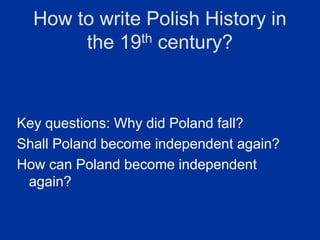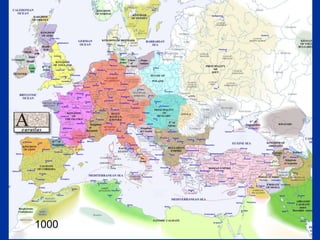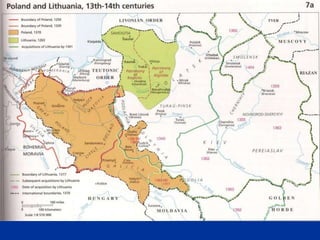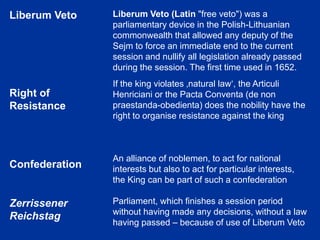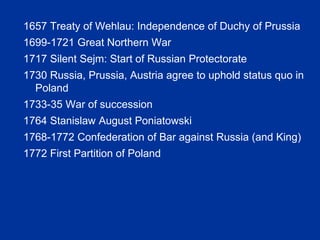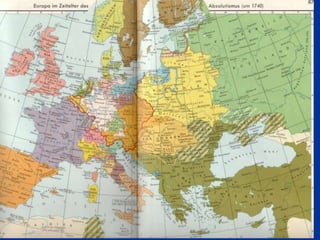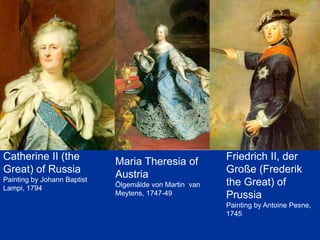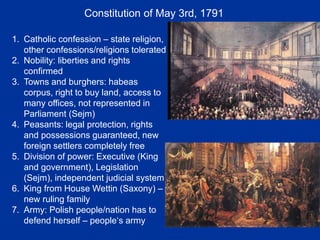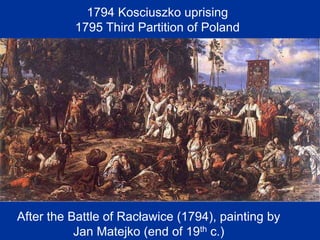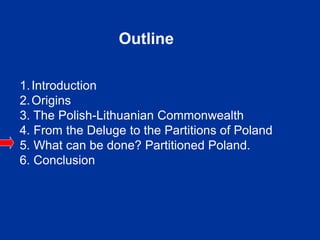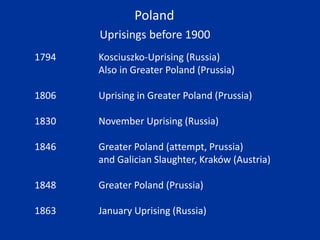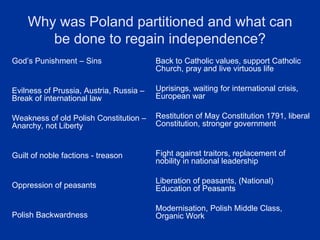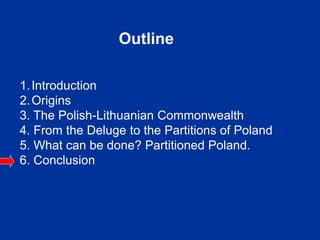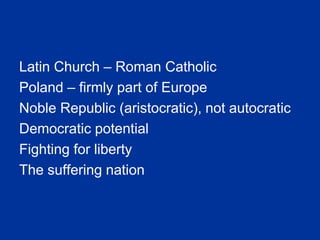This document discusses the history of Poland from its origins in the 10th century to its partitions in the late 18th century. It covers the establishment of the Polish kingdom, the Polish-Lithuanian Commonwealth, conflicts with neighboring powers like Teutonic Order and Sweden, and reforms prior to the partitions by Prussia, Russia and Austria. Contemporary Polish historians debated why Poland was partitioned and what could be done to regain independence, citing reasons like weaknesses in Poland's government and constitution, oppression of peasants, and needing modernization.



